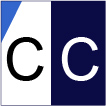
On February 23, 2023, the Loan Market Association (LMA), Loan Syndications and Trading Association (LSTA) and the Asia Pacific Loan Market Association (APLMA) published updates to the Sustainability-Linked Loan Principles (SLLP) and related guidance (SLLP Guidance). Sustainability-linked loans (SLLs) “are any types of loan instruments and/or contingent facilities (such as bonding lines, guarantee lines or letters of credit) for which the economic characteristics can vary depending on whether the borrower achieves ambitious, material and quantifiable predetermined sustainability performance objectives.”
The SLLP promote the development of the SLL market by providing a recommended framework “to articulate the fundamental characteristics of SLLs” based around five core components: Selection of Key Performance Indicators (KPIs); Calibration of Sustainability Performance Targets (SPTs); Loan Characteristics; Reporting; and Verification. The SLL product incentivizes a borrower to achieve “material, ambitious, pre-determined, regularly monitored and externally verified sustainability objectives through KPIs and SPTs.” KPIs and SPTs need to be in place at signing in order for a loan to be classified, referred to or otherwise reported as an SLL.
The reporting requirements for an SLL are the same in Europe as they are in the U.S. A pricing or sustainability compliance certificate should be delivered at regular intervals (typically annually), certifying the borrower’s performance in relation to each KPI and SPT. That certificate is delivered together with the sustainability information produced by the borrower supporting the certification of its sustainability performance, and a separate verification report produced by an external reviewer verifies the borrower’s own sustainability certifications. The content of the verification report, and level of verification provided by the relevant external reviewer, can vary among transactions. The nature of the KPI itself may dictate the level of verification that the external reviewer is able to provide.
The SLLP Guidance elaborates on the SLLP’s core principles with content informed by questions that the associations have received from market participants and the market consensus that has developed on the various issues covered by the Guidance. The LSTA also plans to produce a practice note on how SLLs can be used in fund financing facilities, which is an area of development that the LSTA has observed (particularly in the private equity market). However, the LSTA’s major focus for 2023 is on the ESG-integrated disclosure project -- an industry-wide collaboration working towards the development of a global baseline for disclosure of ESG information. The LSTA’s work in this area will focus on educating market participants about the project and encouraging increased usage of the disclosure template that the project has generated.
Taking the Temperature: We have previously reported on recent SLL developments, including the conversion of an €11 billion revolving credit facility into an SLL by Mercedes-Benz and the largest African sustainability-linked real estate debt arranged to date.
SLLs have proved to be resilient despite difficult market conditions that included an overall drop in loan originations. SLLs remain the fastest growing segment of the sustainable loan market with originations holding steady in 2022 in the U.S. and Europe. Unlike green loans and social loans (both of which are “use of proceeds” loan products), SLLs are borrower focused, sector agnostic and can be used for a range of corporate purposes. In effect, a borrower whose business is not suited to investment in standalone ‘green’ or ‘social’ assets is able to structure a bespoke SLL catered specifically to its business. This makes SLLs well suited for transition financing and for those corporates without a clear environmental or social agenda. In the U.S., where project and infrastructure loans are relatively less common, this flexibility is a particularly important and useful factor. This continued growth underlines the importance of SLLs as a tool for sustainable development, including in the U.S. (which lacks the same regulatory drivers seen in Europe).
In both the U.S. and European markets, the majority of SLL borrowers’ KPIs are concerned with environmental factors (in particular, greenhouse gas emissions). In the UK this emphasis is influenced by regulatory pressures, with the Transition Plan Taskforce continuing to promote climate-related disclosures and the Financial Conduct Authority looking to incorporate similar disclosure obligations within the UK Listing Rules. The associations acknowledge that the cost involved in appointing external reviewers is one of the biggest barriers to SMEs and mid-market borrowers accessing the SLL product, but view this requirement as central to the integrity of the developing SLL market. Borrowers should engage with potential external reviewers at the outset of structuring of an SLL to ensure that they understand the potential costs involved in appointing the reviewer.



